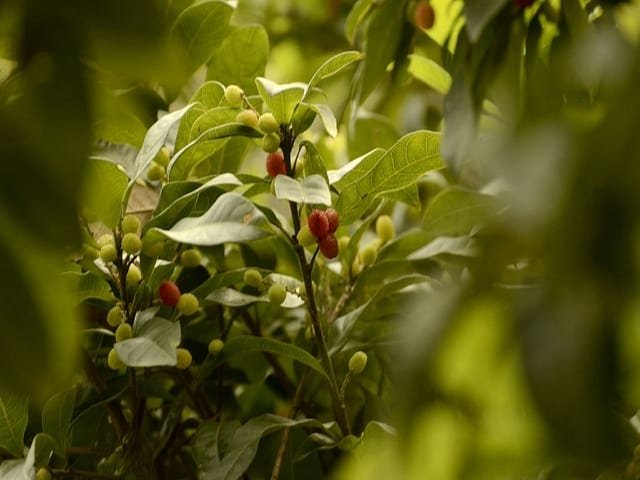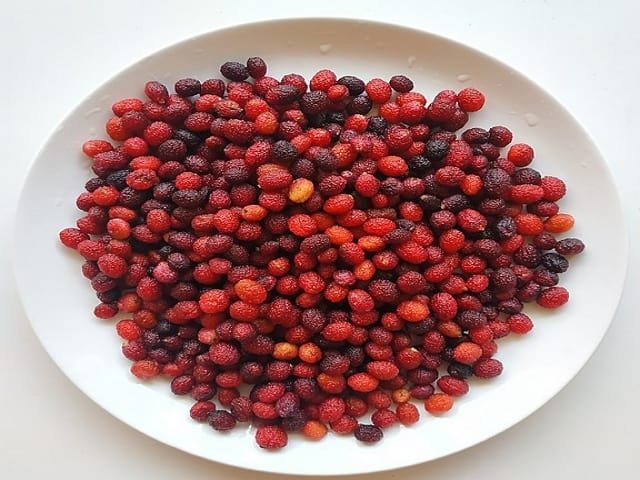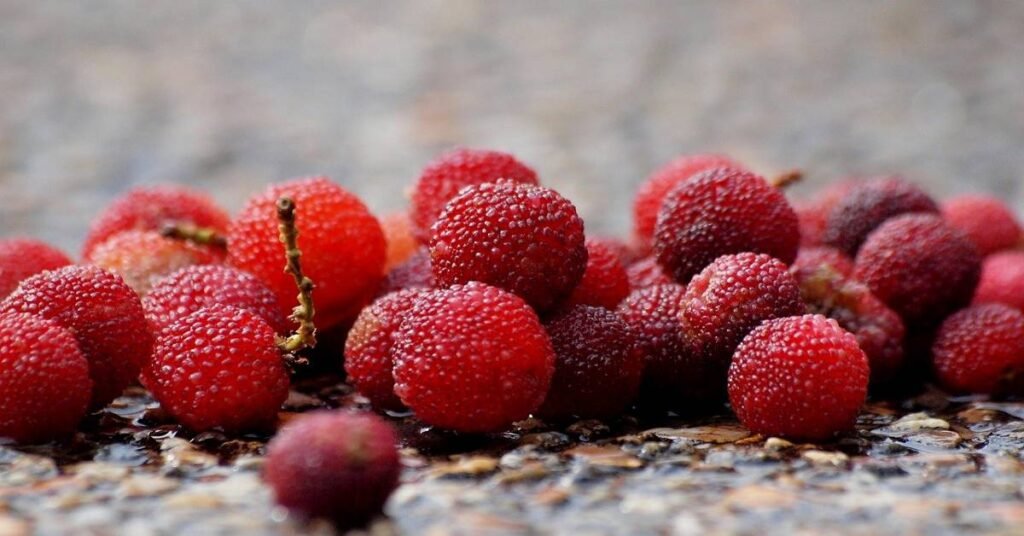Kafal or Myrica esculenta is a tree or large shrub found in hilly regions of Uttarakhand (Garhwal and Kumaon), Himachal Pradesh, Southern Bhutan, and Western Nepal. Myrica esculenta is also known as bayberry, kafal, or kaphal.
The flowering of kafal starts in February, followed by fruiting that starts in the first week of May and continues till last week. Kafal fruit is small, seedy, oval-shaped, and red or purple in color. It is one of the tastiest wild fruit, and you will love its sweet and sour taste. This small fruit has a short shelf life of 2-3 days, so you need to eat them fresh. It is a very popular wild fruit in Uttarakhand.

You can easily find this fruit in the local markets in its fruiting season in Uttarakhand. It is also a source of income for many people living in rural areas. Kafal Fruit is also used to prepare jams, syrups, and squash.
Besides, kaphal is a nutritionally rich fruit and known to have medicinal benefits. It is a rich source of vitamin C, tannins, phenols, flavonoids, and minerals such as Sodium, Potassium, Calcium, Manganese, Copper, Iron, and Zinc.
Kafal/ Myrica esculenta Traditional Uses
Kafal, an ayurvedic plant, is used by native rural people in multiple ways, thanks to the various therapeutic uses of its bark, fruits, leaves, and flowers.
- Kafal fruit is used to prepare jam, squash, and syrups. Also, the juice of the unripe fruit is used as an antihelmintic.
- Fruits and roots of kaphal are used to prepare Ayurvedic formulations such as Chwayanprash and Brahmarasayan, which enhance digestion, memory, concentration, and physical strength.
- Kaphal trees are also used as timber, fuel, and fodder source by native rural people.
- Its stem bark is used to cure chronic cough, asthma, and ulcers.
- People apply a paste of bark on wounds and joints pains as well as to cure cold and headache.
- Paste of leaves is used to treat headaches.
- Chewing Kafal bark is known to give relief from toothache.
- Oil from the flower is useful in treating earache, diarrhea, paralysis, and inflammation.
- Pharmacological studies show kaphal has many biological properties such as anti-inflammatory, antioxidant, anti-microbial, hepatoprotective, antibacterial, antifungal, and anti-asthmatic, and many more.
Conclusion

Kafal is a tree with multiple benefits, but the sad part is this wild tree is facing the danger of extinction due to various reasons like increased urbanization, forest fires, climate change, and many more.
We hope this article was helpful for you.
If you have any queries, please drop us a comment in the comment section.
Recommended Readings:
- Indian Barberry/ Daru Haldi/ Kilmora- Medicinal Plant
- Chaulai/ Amaranth- An Ancient Super-Food
- Fiddlehead Fern/ Lingdu Vegetable- Nutrition Facts and Health Benefits
- Buransh/Rhododendron arboreum- State Tree of Uttarakhand
- Finger Millet/Ragi/Mandua- Nutrition Content and Health Benefits
- Barnyard Millet/Jhangora/Sanwa- A Nutritious Food from Uttarakhand
- Cleome viscosa/Jakhiya- A Secret Spice from Uttarakhand
- Stinging Nettle (Kandali)- Uses, Benefits, and Side Effects
- Horse Gram/ Gahat Dal/ Kulthi- An Amazing Super-Food


Nice piece of information..Thanks for sharing.
Thanks
Thanks for this article. this help me to jog my memory with this fruits.
Welcome